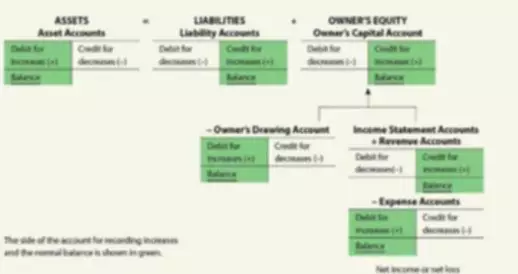8 3 Receivables before the adoption of ASU 2016-13
Content

If returns and allowances are significant, an allowance for sales returns and allowances account, which is an asset valuation account contra to accounts receivable, is used to record the estimates. To illustrate notes receivable scenarios, let’s return to Billie’s Watercraft Warehouse (BWW) as the example. BWW has a customer, Waterways Corporation, that tends to have larger purchases that require an extended payment period. On January 1, 2018, Waterways purchased merchandise in the amount of $250,000. BWW agreed to lend the $250,000 purchase cost (sales price) to Waterways under the following conditions.

Some of these companies recovered through good management, and cash flows returned. It is important for these companies to rebuild their relationships with suppliers they had previously not paid. So, it is not uncommon for these companies, after recovery, to make efforts to pay bills that the supplier had previously written-off. Note that for this method, the previous balance in the AFDA account is not taken into consideration. This is because the credit sales method is intended to calculate the bad debt expense that will be reported on the income statement.
Notes Receivable Explained
The principal amount is paid back in a series of scheduled payments over the course of one year or less. Notes receivable can be secured or unsecured, depending on the borrower’s credit history. As a quick note, in this article we are mainly concerned with accounting for notes receivable; however, the concepts that we will consider apply equally well to notes payable. An automated financial management system, such as NetSuite Cloud Accounting Software, simplifies the journal entry process and integrates with cash management to more easily manage notes receivable.
This is because the FV is the cash received at maturity or cash inflow (positive value), while the PV is the cash lent or a cash outflow (opposite or negative value). Many business calculators require the use of a ± sign for one value and no sign (or a positive value) for the other to calculate imputed interest rates correctly. Consult your calculator manual for further instructions regarding zero-interest note calculations. This makes intuitive sense since the stated rate of 10% is equal to the market rate of 10%.
Payment of the Note
A company lends one of its important suppliers $10,000 and the supplier gives the company a written promissory note to repay the amount in six months along with interest at 8% per year. The company will debit its current asset account notes receivable for the principal amount of $10,000. Accounts receivables, however, are unsecured debts that don’t have any collateral backing them up. The main purpose of recording notes receivable on a company’s balance sheet is to show its ability to collect outstanding amounts owed by customers in the future. If this value is too high, it can be a sign that the company may have been extending credit too liberally.
Is notes receivable an owner’s equity?
Notes receivable are a current asset, meaning they provide economic benefit for only the next year on the balance sheet. The balance sheet shows assets, liabilities and shareholders' equity and the notes receivable represent something a company owns that is expected to be settled within the next 365 days.
A note receivable of $300,000, due in the next 3 months, with payments of $100,000 at the end of each month, and an interest rate of 10%, is recorded for Company A. Ultimately, every company must evaluate its own financial situation when deciding whether or not to pursue notes receivable. Understanding both the advantages and disadvantages of this instrument is crucial for making informed decisions about how best to manage cash flow and extend credit while minimizing risks.
Companies that don’t use Notes Receivable
If credit policies are too flexible, more sales to higher risk customers may occur, resulting in more uncollectible accounts. The bottom line is that receivables management is about finding the right level of receivables to maintain when implementing the company’s credit policies. BWW issued Sea Ferries a note in the amount of $100,000 on January 1, 2018, with a maturity date of six months, at a 10% annual interest rate. On July 2, BWW determined that Sea Ferries dishonored its note and recorded the following entry to convert this debt into accounts receivable. For example, a company may have an outstanding account receivable in the amount of $1,000.

However, because investors often finance their investment purchase by borrowing, they are very sensitive to changes in underlying receivables assets’ quality. This sensitivity was the initial source of the problems experienced in the sub-prime mortgage market (derivatives) meltdown in 2008. In this case, Ashton guarantees payment to Savoy for any uncollectible receivables (re- course obligation). Under IFRS, the guarantee means that the risks and rewards have not been transferred to the factor, and the accounting treatment would be as a secured borrowing as illustrated above in Cromwell—Note Payable. Under ASPE, if all three conditions for treatment as a sale as described previously are met, the transaction can be treated as a sale. Factors typically charge a 2% to 3% fee when they buy the right to collect payments from customers.
Calculating the Maturity Date
Notes receivable are generally considered to be an asset on a company’s balance sheet. Notes receivable are basically loans that a company has extended to customers, and the company expects to be paid back at some point in the future. Note receivable assets can include both short-term and long-term notes payable. A note receivable is a written promise to receive a specific amount of cash from another party on one or more future dates. Overdue accounts receivable are sometimes converted into notes receivable, thereby giving the debtor more time to pay, while also sometimes including a personal guarantee by the owner of the debtor.
- In this case, Ashton guarantees payment to Savoy for any uncollectible receivables (re- course obligation).
- The term recognition of notes receivable is used to describe the process of acknowledging the existence of a notes receivable on the balance sheet of a company.
- You must select Allow Discounts on TN check box in the Trade Note Types (tfcmg0516m000) session and also the steps related to discounting in
the receipt method. - You must specify the Discounting Details such as, Currency for Discounting, Discount Amount or Discount Percentage, Commission Percentage or Commission Amount.
- There is also generally an interest requirement because the financial loan amount may be larger than accounts receivable, and the length of contract is possibly longer.
This is because the calculation is intended to be an estimate of the AFDA ending balance, so the adjustment amount is whatever is required to result in that ending balance. IFRS 15.53 – the term variable consideration, discussed in Chapter 5, Revenue, would also include sales discounts because it is uncertain how many customers will actually take the sales discount. For this reason, IFRS states that an estimate of “highly probable” sales discounts expected to be taken by customers, needs to be determined and included at the time of the sale. Given the high rate of return identified in the preceding paragraph, recording the estimate immediately upon sale is conceptually sound and is consistent with the net method described below. The standard suggests using either the expected value (a weighted average of probabilities), or the “most likely amount” to estimate sales discounts, perhaps based on past history.
note receivable
Remember from earlier in the chapter, a note (also called a promissory note) is an unconditional written promise by a borrower to pay a definite sum of money to the lender (payee) on demand or on a specific date. A customer may give a note to a business for an amount due on an account receivable or for the sale of a large item such as a refrigerator. Also, a business may give a note to a supplier in exchange for merchandise to sell or to a bank or an individual for a loan. Thus, a company may have notes receivable or notes payable arising from transactions with customers, suppliers, banks, or individuals. Accounts receivable result from credit sales in the normal course of business (called trade receivables) that are expected to be collected within one year. For this reason, they are classified as current receivables on the balance sheet and initially measured at the time of the credit sale at their net realizable value (NRV).


 Rəsmi Saytı 202 Our Lady Of The Pillar College Cauayan – 688
Rəsmi Saytı 202 Our Lady Of The Pillar College Cauayan – 688